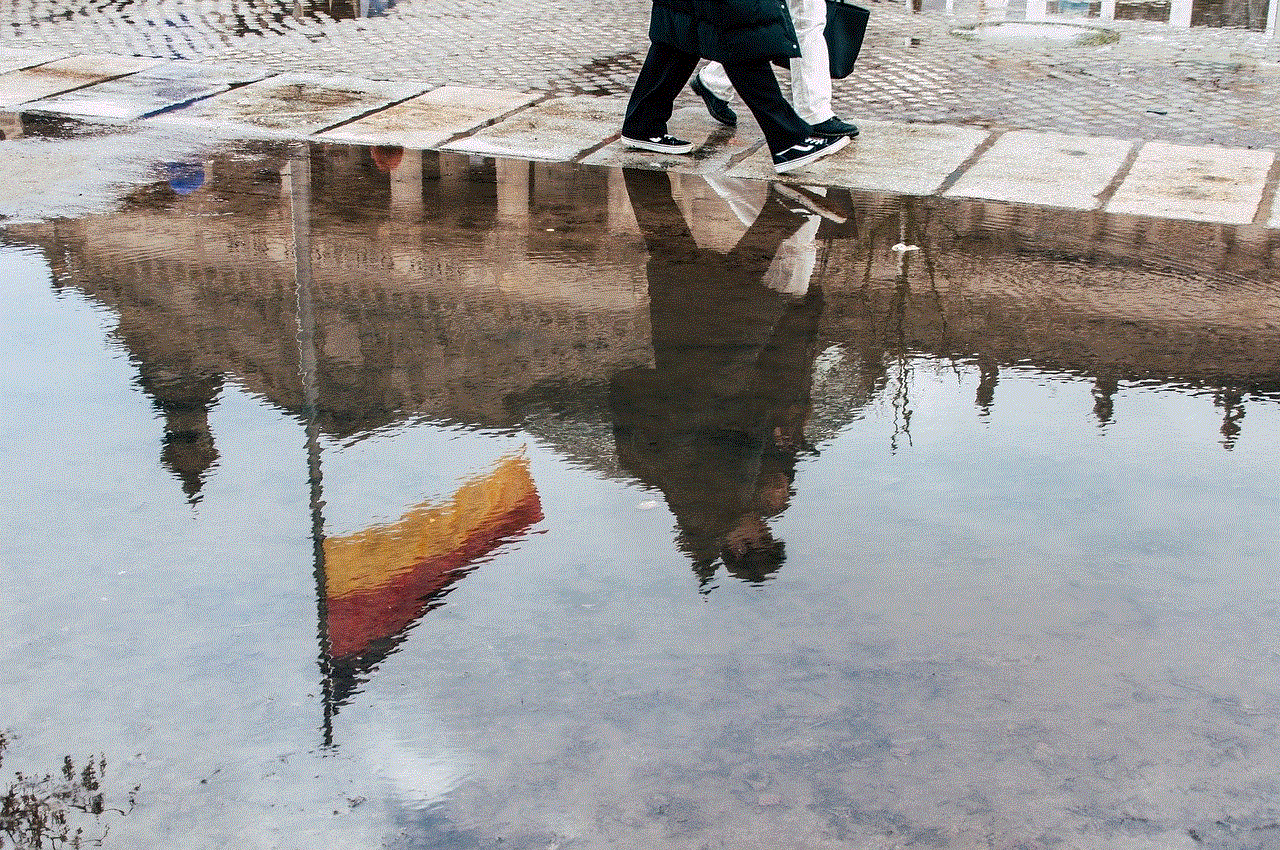juego para ni?os sin padres
La ausencia de los padres en la vida de un niño puede tener un impacto profundo y duradero en su desarrollo emocional, psicológico y social. Los niños que crecen sin la presencia y el cuidado de sus padres enfrentan una serie de desafíos únicos que pueden afectar su bienestar y su capacidad para desarrollar relaciones saludables en el futuro.
Cuando pensamos en un niño sin padres, puede venir a nuestra mente la imagen de un huérfano que vive en un orfanato o en una familia adoptiva. Sin embargo, la realidad es que hay muchos niños que, aunque tienen padres vivos, no están presentes en sus vidas debido a diversas circunstancias, como el abandono, la negligencia, la prisión o la muerte. Estos niños pueden estar viviendo con otros familiares, en hogares de acogida o incluso en las calles.
Independientemente de la situación particular, la ausencia de los padres puede tener un impacto significativo en la vida de un niño. En este artículo, exploraremos los efectos de crecer sin padres y cómo podemos apoyar a estos niños en su camino hacia una vida saludable y plena.
Efectos emocionales
La pérdida de los padres es una experiencia devastadora para cualquier niño. Puede provocar una profunda sensación de tristeza, soledad y abandono. Los niños que crecen sin padres a menudo tienen problemas para expresar sus emociones y pueden sentir una gran cantidad de ira, resentimiento y confusión. También pueden tener dificultades para confiar en los demás y en sí mismos, lo que puede afectar su capacidad para formar relaciones saludables en el futuro.
La falta de una figura de apego primaria, como un padre o una madre, también puede afectar el desarrollo emocional de un niño. Los padres juegan un papel importante en el proceso de formación de la identidad de un niño, ya que les ayudan a desarrollar su autoestima y seguridad en sí mismos. Sin esa guía y apoyo, los niños pueden tener dificultades para desarrollar una imagen positiva de sí mismos y pueden luchar con problemas de autoestima y confianza.
Efectos psicológicos
La ausencia de los padres también puede tener un impacto en la salud mental de un niño. Los estudios han demostrado que los niños sin padres tienen un mayor riesgo de desarrollar trastornos mentales, como la depresión, la ansiedad y el trastorno de estrés postraumático. Además, pueden tener dificultades para controlar sus emociones y comportamientos, lo que puede manifestarse en problemas de conducta, como la agresión, el aislamiento social y la falta de motivación.
El trauma de perder a los padres o de no tener una figura de apego estable también puede afectar la capacidad de un niño para aprender y concentrarse en la escuela. Pueden tener dificultades para seguir instrucciones, mantenerse enfocados y alcanzar su máximo potencial académico. Esto puede afectar su rendimiento escolar y su futuro profesional.
Efectos sociales
Los niños que crecen sin padres también pueden enfrentar una serie de desafíos sociales. Pueden tener dificultades para relacionarse con sus compañeros y pueden sentirse excluidos o diferentes de ellos. Además, pueden tener dificultades para comprender las normas sociales y pueden tener problemas para establecer límites y respetar la autoridad.
La falta de modelos a seguir y de figuras de apoyo también puede afectar la capacidad de un niño para desarrollar habilidades sociales y emocionales saludables. Pueden tener dificultades para establecer relaciones significativas y duraderas con los demás, lo que puede afectar su capacidad para formar vínculos interpersonales en el futuro.
Cómo apoyar a los niños sin padres
Es importante reconocer que cada niño es diferente y que la ausencia de los padres afectará a cada uno de manera única. Sin embargo, hay algunas formas en las que podemos apoyar a estos niños en su camino hacia una vida saludable y plena.
1. Proporcionar un ambiente seguro y estable
Los niños que crecen sin padres a menudo experimentan una gran cantidad de incertidumbre y cambios en sus vidas. Por lo tanto, es importante proporcionarles un ambiente seguro y estable en el que puedan sentirse protegidos y cuidados. Esto puede incluir un hogar amoroso, una escuela segura y un círculo de amigos y familiares de confianza que puedan actuar como figuras de apoyo.
2. Fomentar la expresión de emociones
Es importante permitir que los niños sin padres expresen sus emociones de manera saludable. Esto puede ayudarles a procesar sus sentimientos y a sentirse entendidos y apoyados. Puedes animarlos a hablar sobre sus emociones, escribir en un diario o participar en actividades creativas como la pintura o la música.
3. Ayudarles a desarrollar una identidad positiva
Como mencionamos anteriormente, la falta de padres puede afectar la identidad de un niño. Por lo tanto, es importante ayudarles a desarrollar una imagen positiva de sí mismos. Puedes hacer esto alentándolos, reconociendo sus fortalezas y ayudándoles a descubrir sus intereses y pasiones.
4. Proporcionar apoyo emocional y terapia si es necesario
Algunos niños pueden necesitar ayuda profesional para lidiar con los desafíos emocionales y psicológicos que enfrentan debido a la ausencia de sus padres. Es importante estar atentos a cualquier señal de angustia emocional o cambios en su comportamiento y buscar ayuda si es necesario. La terapia puede ayudarles a procesar sus emociones y a desarrollar habilidades para enfrentar los desafíos de manera saludable.
5. Fomentar relaciones significativas
Los niños sin padres pueden tener dificultades para establecer relaciones significativas, pero es importante fomentar estas conexiones en sus vidas. Puedes ayudarles a construir amistades saludables y a ser parte de comunidades o grupos que compartan sus intereses y valores. También puedes alentarlos a establecer una relación con un adulto de confianza que pueda actuar como un mentor o figura de apoyo en su vida.
En conclusión, es importante reconocer que los niños sin padres enfrentan una serie de desafíos únicos en su vida. La ausencia de los padres puede afectar su bienestar emocional, psicológico y social, lo que puede tener un impacto a largo plazo en su vida. Sin embargo, con el apoyo adecuado y un ambiente amoroso y estable, estos niños pueden superar estos desafíos y tener una vida feliz y saludable. Como sociedad, es nuestra responsabilidad apoyar a estos niños y ayudarles a alcanzar su máximo potencial.
find the emoji i see dead people
Title: The Haunting Emoji: Unveiling the Mysterious World of Ghostly Emoticons
Introduction:
In the digital age, emojis have become an integral part of our communication, allowing us to express emotions, convey messages, and add a touch of humor to our conversations. However, some emojis carry a deeper meaning that goes beyond their visual representation. One such enigmatic emoji is the ghost emoji 🌬️, which has sparked curiosity and speculation among many users. In this article, we will delve into the eerie world of the ghost emoji, exploring its origins, cultural significance, and the various interpretations it has garnered over time. Join us on this chilling journey as we uncover the secrets behind the emoji that sees dead people.
1. The Ghost Emoji’s Origin:
The ghost emoji, also known as the “Snapchat Ghost,” was initially introduced in 2010 as part of Unicode 6.0. It quickly gained popularity, appearing across various platforms and messaging applications. The design of the ghost emoji varies slightly among platforms, with some featuring a friendly-looking ghost and others portraying a more sinister specter.
2. Cultural Beliefs and Supernatural Connections:
Throughout history, ghosts have been an integral part of folklore and cultural beliefs across the globe. From ancient Egyptian mythology to contemporary ghost stories, spirits have captivated human imagination. The ghost emoji taps into this fascination, symbolizing the ethereal realm and the afterlife.
3. Haunted Messaging: Ghost Emoji in Popular Culture:
The ghost emoji’s popularity skyrocketed with the release of the 1999 supernatural thriller film “The Sixth Sense,” where young Cole Sear famously declares, “I see dead people.” Since then, the phrase has become embedded in popular culture, and the ghost emoji has become synonymous with it. Countless memes, GIFs, and social media posts feature the ghost emoji as a playful nod to the film’s iconic line.
4. Symbolism and Interpretations:
The ghost emoji’s meaning is subjective, and its interpretation varies among users. Some perceive it as a representation of innocence, purity, or even a friendly apparition. However, others associate it with fear, horror, or the paranormal. The emoji’s simplicity allows for personal interpretation, making it a versatile tool for expression.



5. Ghost Emoji in Supernatural and Paranormal Discussions:
The ghost emoji has found its way into online discussions about the supernatural and paranormal phenomena. It is often used to symbolize encounters with ghosts, haunted places, or paranormal experiences. Whether shared in a serious context or with a touch of humor, the ghost emoji adds an eerie element to these conversations.
6. Ghost Emoji and Halloween:
Halloween, a holiday celebrated worldwide, brings forth an increased usage of the ghost emoji. As the holiday revolves around spooky themes, the ghost emoji becomes a staple in Halloween-related messaging, costumes, and decorations. Its playful representation of the supernatural aligns perfectly with the festive spirit of Halloween.
7. Impact on Social Media and Digital Communication:
Emojis have revolutionized digital communication, enabling users to express emotions and convey messages concisely. The ghost emoji’s popularity highlights the appeal of incorporating supernatural elements into online interactions. It has become a recognizable symbol, transcending language barriers and fostering a sense of connection among users.
8. The Dark Side of the Ghost Emoji:
While the ghost emoji is often associated with lightheartedness and humor, it has also been employed in more malevolent contexts. Cyberbullying, online harassment, and even death threats have been conveyed using the ghost emoji, highlighting the darker side of its usage. Such instances remind us of the importance of responsible and respectful communication online.
9. Evolution and Adaptation:
As technology advances, emojis continue to evolve, with new additions and variations constantly emerging. Various platforms and applications have introduced unique ghost emojis, each with its own subtle nuances. These adaptations keep the ghost emoji fresh and relevant, ensuring its continued presence in our digital conversations.
10. The Ghost Emoji’s Legacy:
The ghost emoji’s enduring popularity is a testament to its cultural impact. It transcends its simple appearance, evoking emotions, sparking discussions, and prompting creativity. Whether it’s used to convey a spooky sentiment, symbolize the supernatural, or simply add a touch of whimsy, the ghost emoji has carved its place in our digital lexicon.
Conclusion:
The ghost emoji has captured the fascination of users worldwide, encapsulating the allure of the supernatural and the mysteries of the afterlife. Its versatility and adaptability have made it a beloved symbol in digital communication, allowing users to express a wide range of emotions and ideas. As we continue to embrace emojis as an integral part of our conversations, the ghost emoji’s legacy lives on, forever connecting us to a world beyond the living.
how to stay warm on halloween
As the leaves start to change color and the air becomes crisp, Halloween season is upon us. It’s a magical time of year filled with costumes, candy, and spooky decorations. However, it’s also a time when the weather can take a turn for the cold. Whether you’re trick-or-treating with the kids or attending a Halloween party, staying warm is essential to fully enjoy the festivities. In this article, we will explore various tips and tricks on how to stay warm on Halloween, ensuring that you have a comfortable and enjoyable experience.
1. Layering is Key:
One of the simplest and most effective ways to stay warm on Halloween is by layering your clothing. Start with a lightweight, moisture-wicking base layer to keep your body dry and comfortable. Add a middle layer, such as a sweater or fleece, for insulation. Finally, top it off with a waterproof and wind-resistant outer layer to protect you from the elements.
2. Choose the Right Fabrics:
When selecting your Halloween costume or outfit, opt for fabrics that provide warmth. Wool, fleece, and thermal materials are excellent choices as they provide insulation and retain heat. Avoid costumes made from thin materials like satin or silk, as they offer little protection against the cold.
3. Wear Insulated Accessories:
Accessories play a crucial role in keeping you warm. Consider wearing a hat, scarf, and gloves made from insulating materials like wool or fleece. These accessories will help retain heat and protect your extremities, which are often the first to feel the cold.
4. Invest in Heat Packs:
Heat packs are a fantastic way to keep warm on Halloween. These small, portable packs contain a chemical that produces heat when activated. You can slip them into your pockets, gloves, or shoes for instant warmth. Heat packs are readily available at most drugstores and outdoor retailers.



5. Opt for Closed-Toe Shoes:
Ensure your footwear choice for Halloween is closed-toe and insulated. Cold feet can quickly ruin your night, so opt for shoes that provide warmth and protection. Consider wearing thicker socks or even layering them for added insulation.
6. Stay Hydrated:
Staying hydrated is crucial for maintaining body temperature. Even though you might not feel as thirsty during the colder months, it’s essential to drink water regularly. Hydration helps regulate body temperature and keeps your body functioning optimally.
7. Use Hand and Foot Warmers:
Hand and foot warmers are small packets that generate heat when exposed to air. These disposable warmers are designed to fit inside your gloves or shoes, providing heat to your extremities. They’re readily available at sporting goods stores and can be a lifesaver on chilly Halloween nights.
8. Eat Warm Foods:
What better way to warm up on Halloween than by enjoying some delicious warm foods? Consider incorporating warm soups, stews, or hot beverages into your Halloween menu. These foods not only provide comfort but also help to warm your body from the inside.
9. Choose the Right Costume:
When selecting your Halloween costume, consider the weather conditions. Opt for costumes that provide more coverage and insulation. If your costume is sleeveless or exposes a large amount of skin, layering underneath can help keep you warm without compromising your outfit.
10. Plan Indoor Activities:
If the weather forecast predicts extremely cold temperatures or inclement weather, consider planning indoor Halloween activities. Hosting a Halloween movie night, a costume party at home, or visiting a local indoor haunted house are all great alternatives to outdoor activities.
11. Stay Active:
Engaging in physical activities can help raise your body temperature and keep you warm. Consider going for a brisk walk or participating in a Halloween-themed workout class before heading out for trick-or-treating or attending a party. This will help warm up your body and keep you comfortable throughout the evening.
12. Befriend Heat Lamps or Fire Pits:
If you’re hosting an outdoor Halloween event or handing out candy, consider incorporating heat lamps or fire pits into your setup. These heat sources provide a cozy atmosphere while also keeping you and your guests warm.
13. Be Mindful of Wind Chill:
Wind chill can make the temperature feel even colder. Pay attention to the wind forecast and plan your activities accordingly. If possible, choose routes or locations with lower wind exposure to minimize its effect on your comfort level.
14. Take Breaks Indoors:
If you’re spending a significant amount of time outdoors on Halloween, make sure to take regular breaks indoors. Stepping inside for a few minutes allows your body to warm up and prevents excessive exposure to the cold.
15. Carry a Blanket or Wrap:
If you’re attending an outdoor Halloween event or watching a parade, consider carrying a lightweight blanket or wrap with you. This extra layer can provide instant warmth when needed and can easily be folded or carried in a bag when not in use.
16. Mind Your Body Heat:



Remember that your body heat is affected by external factors. Avoid excessive alcohol consumption, as it can cause your body to lose heat faster. Additionally, keep an eye out for signs of hypothermia, such as shivering, confusion, and difficulty speaking. If you or someone around you exhibits these symptoms, seek warmth and medical attention immediately.
In conclusion, staying warm on Halloween is crucial for a comfortable and enjoyable experience. By following these tips and tricks, you can ensure that the cold weather doesn’t put a damper on your festivities. Layering your clothing, choosing the right fabrics, and wearing insulated accessories are all excellent ways to stay warm. Additionally, incorporating heat packs, hand and foot warmers, and enjoying warm foods can provide instant warmth. Remember to plan indoor activities, stay active, and be mindful of wind chill to keep warm throughout the evening. With these strategies in mind, you can fully embrace the Halloween spirit without worrying about the cold.